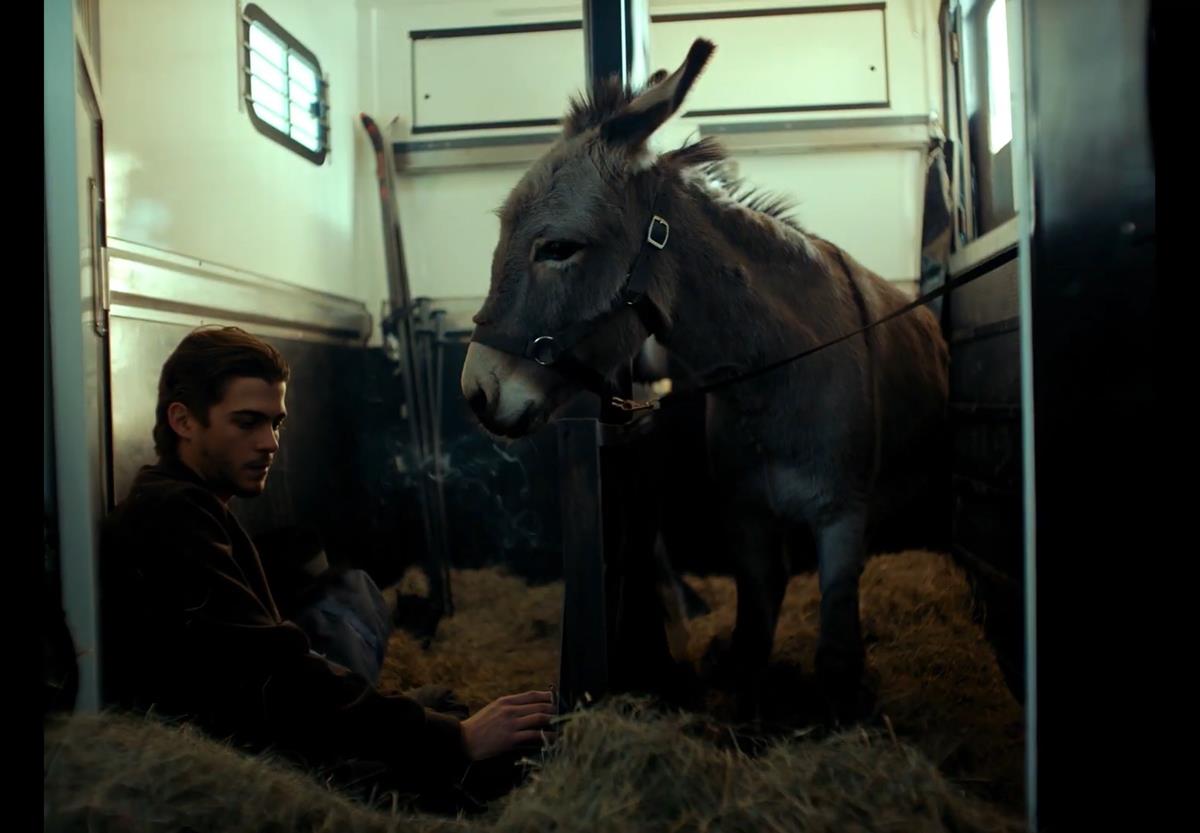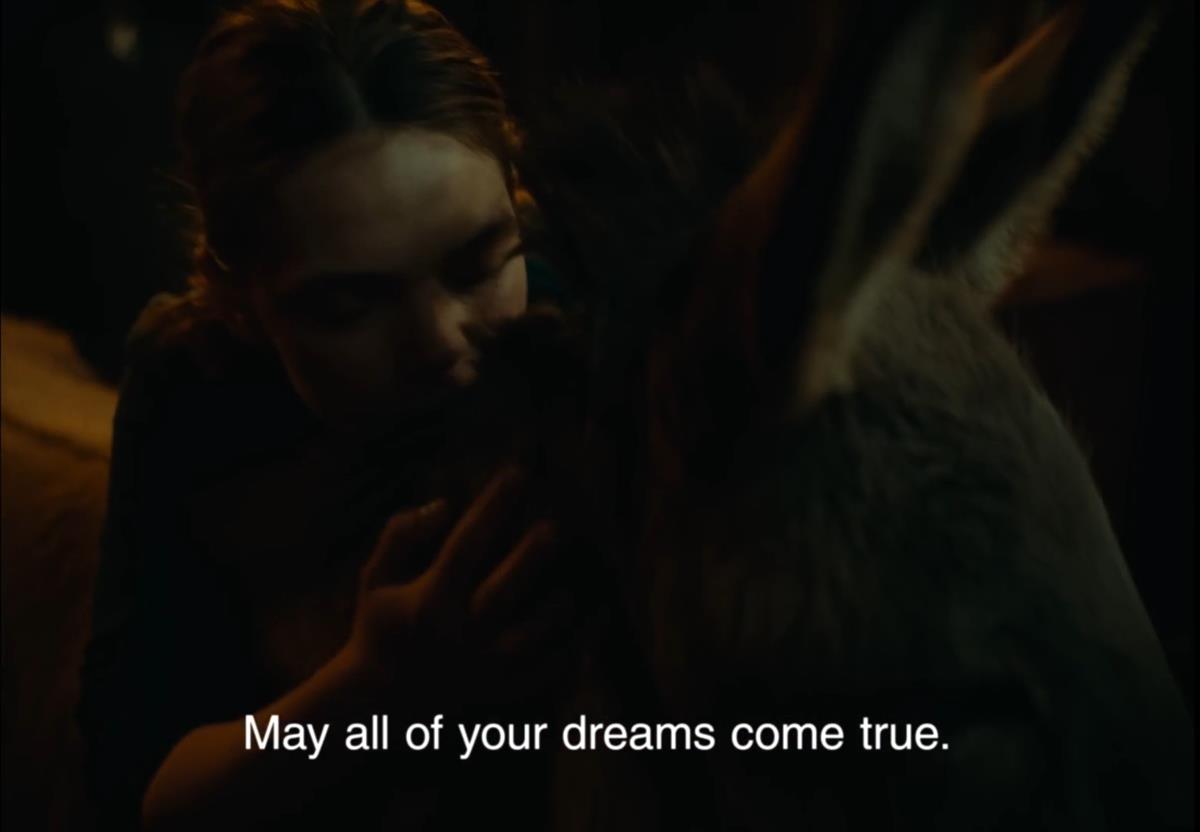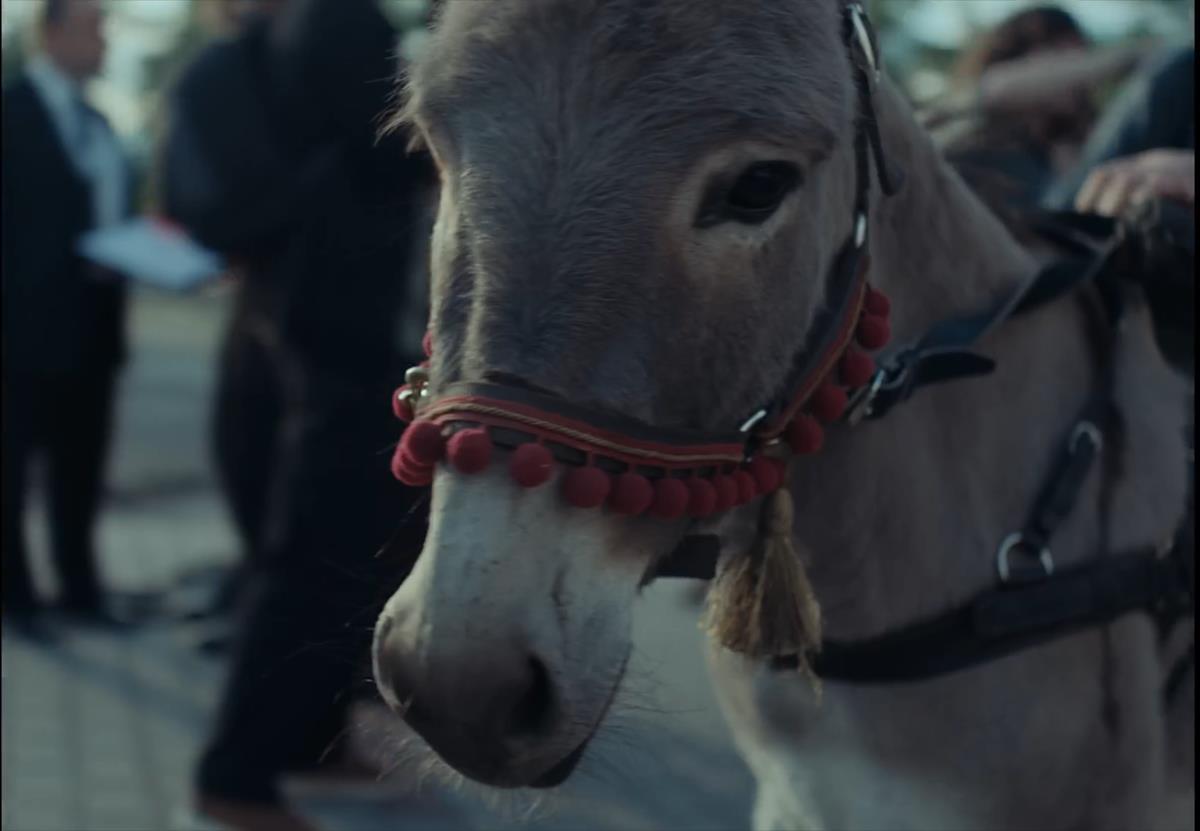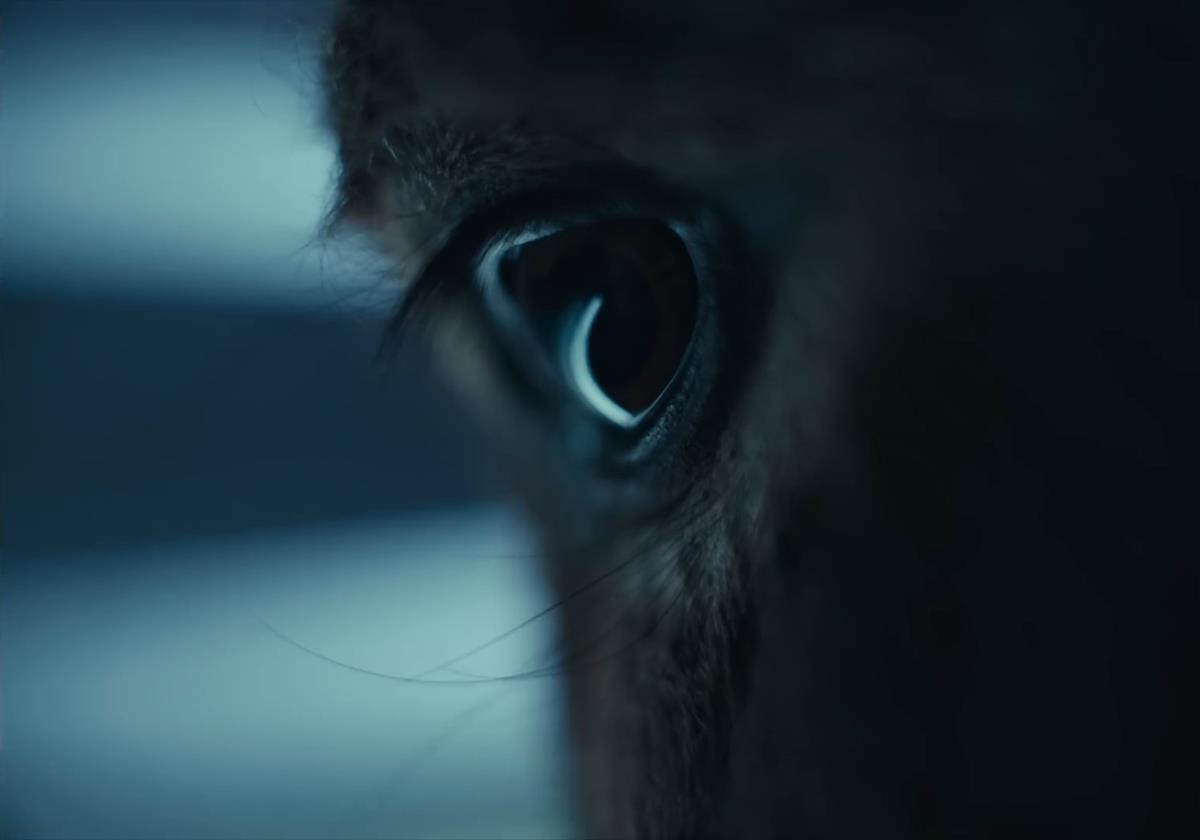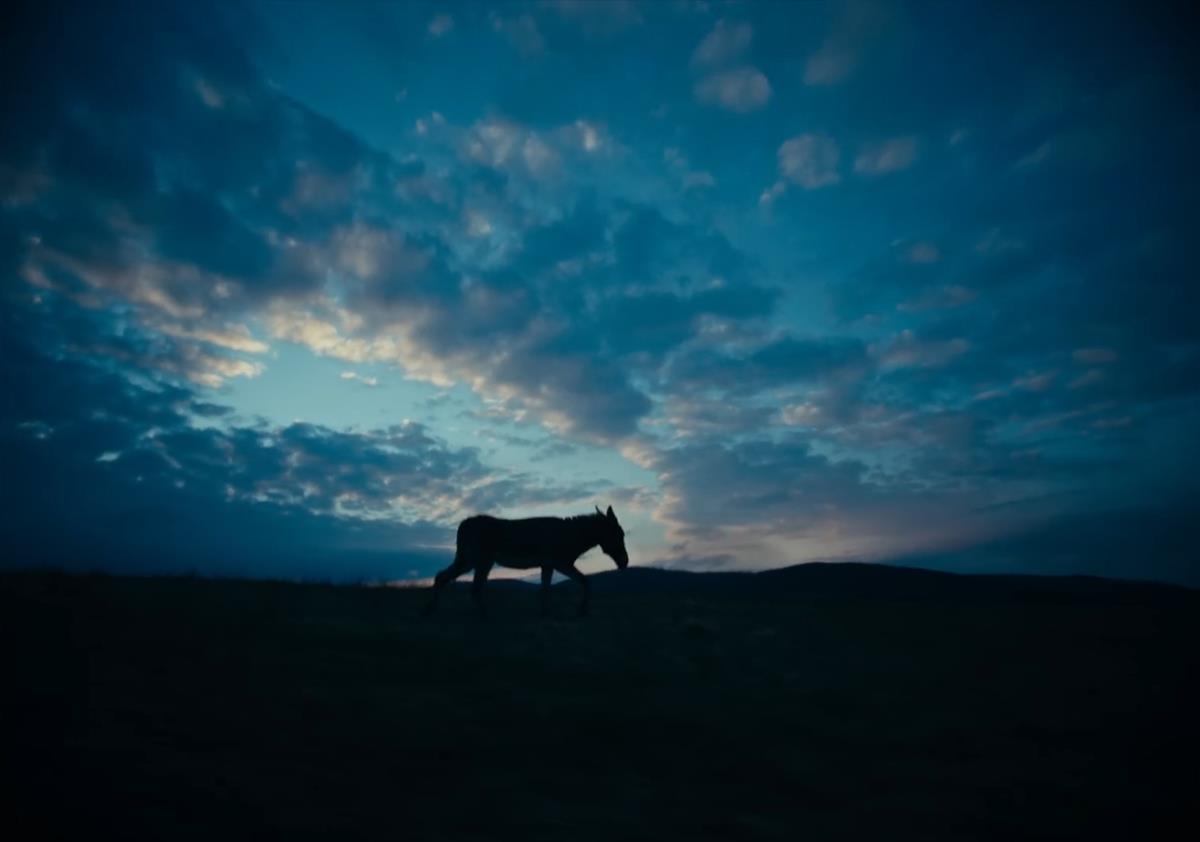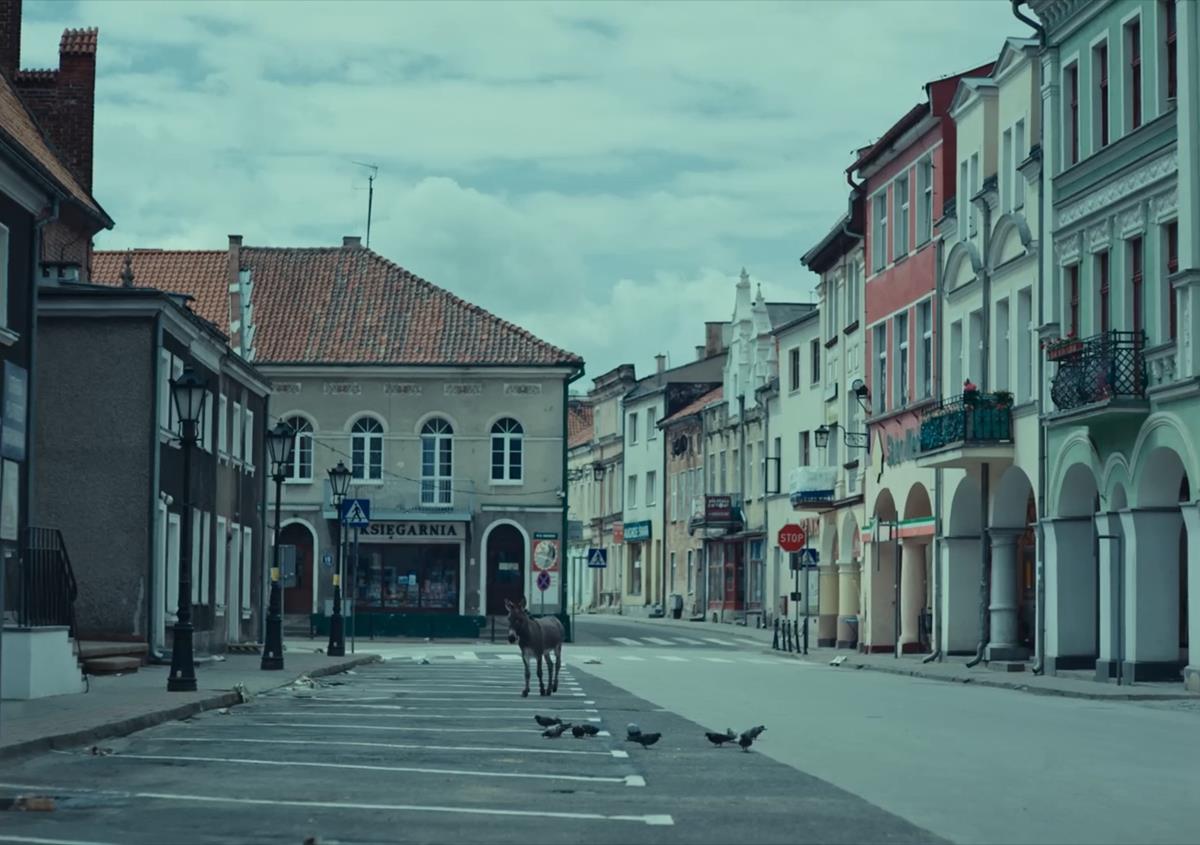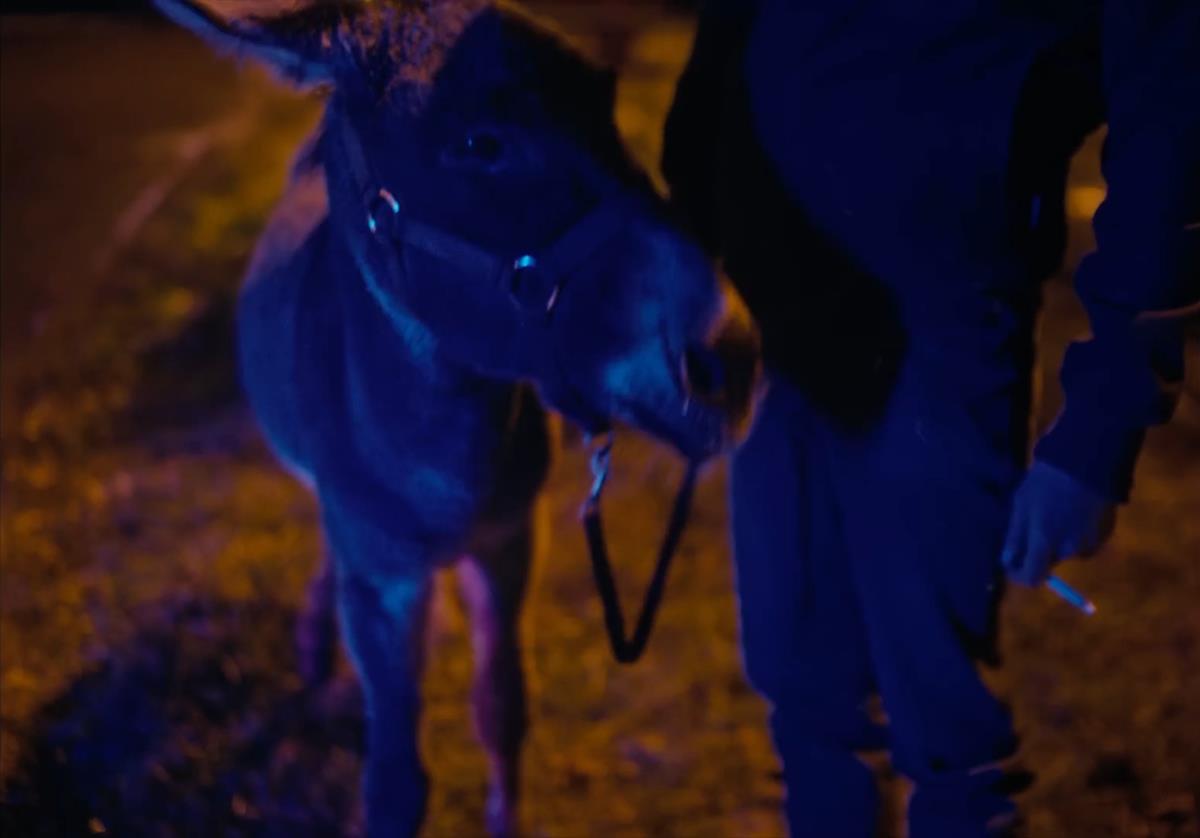TL;DR
- A new narrative feature told entirely from the POV of a donkey won the jury prize at Cannes and is Poland’s Oscar entry.
- Octogenarian director Jerzy Skolimowski’s film is so brash, freewheeling and inventive that you’d assume it was the work of a brilliant 25-year-old.
- “EO” speaks directly to the horror of our destruction of the natural world and its nonhuman inhabitants without bringing God into the picture.
Told from the point of view of a donkey, “EO is a thrillingly imaginative piece of filmmaking: a strange, haunting epic about a donkey that couldn’t feel more of our moment,” raves John Powers at NPR.
The Sideshow & Janus Films production won the jury prize at Cannes this year, and is Poland’s entry for the Best International Feature Film Oscar.
Marshall Shaffer at Slant says, “The film’s poetic use of image and sound to align the audience with a donkey’s perspective is a triumph of artistry and empathy alike.”
Venerable critic Amy Taubin thinks EO is one of the greatest films she’s ever seen, but then she also includes French director Robert Bresson’s austere masterpiece about the drudgery of a donkey, Au Hasard, Balthazar, in her top five films of all time.
Seeing Au Hasard, Balthazar in 1966 was a pivotal moment for the director of EO, Jerzy Skolimowski, as he recounted to Eric Kohn at IndieWire.
“I was mostly watching the film with a slightly cynical professional attitude to learn how it was done,” he said. “When the film ended, I found out I had tears in my eyes.”
Skolimowski realized that the donkey’s experiences, which take some tragic turns, were uninhibited by the artifice of human performance. “That was the biggest lesson I ever got from a filmmaker,” he said. “The animal character can actually move the audience stronger than any actor.”
It took the director until now to get around to making his donkey movie, though — and it wasn’t a slam dunk that a donkey was the animal of choice either.
Skolimowski and his wife Ewa Piaskowska, the film’s co-writer and co-producer, explained to Shaffer how the project came about.
“We decided that we should try to make a film about something that really touches our hearts and minds in a direct way. Something that we would like to protest. We [discovered] that the only cause that was really moving us emotionally was the fate of nature and animals. And that is how we got close to the decision to offer the main part to an animal performer, and we chose the donkey.”
READ MORE: Interview: Jerzy Skolimowski and Ewa Piaskowska on Changing Hearts with EO (Slant)
There was something about the eyes of this particular animal that spoke to the filmmakers.
“It was all in the eyes,” Skolimowski tells Amanda Champagne-Meadows at Deadline. “We were struck by the look of the donkey’s eyes… enormously large with this very specific melancholic look.” They realized that the same shots set from the POV of the animal would reinterpret the situation, making everyday objects and situations anew.
READ MORE: ‘EO’ Filmmakers On Why A Donkey Is Their Star: Not “Oh, Another Film About Cats” (Deadline)
READ IT ON AMPLIFY: Under the Volcano(es): How Sara Dosa Found a “Fire of Love”
Director of Photography Michał Dymek, PSC discussed his collaboration with director Jerzy Skolimowski in an article on the Panavision website, sharing the visual inspirations behind the film.
“I would describe the look of EO as a fusion of youth and experience mixed with hunger for visual madness and the love of filmmaking seen through a donkey’s eyes,” he said. “Our movie references included the documentary films of Bogdan Dziworski, Federico Fellini’s 8½ and Carlos Reygadas’ Post Tenebras Lux. From art, our references were the paintings of Leon Tarasewicz and Tomasz Tatarczyk and the works of Antony Gormley. In addition, I was searching for inspiration by observing reality and trying to understand my surroundings. I also spent some time on Instagram looking for creativeness.”
Working on EO, he said, “offered me unbelievable artistic freedom, which I have never had before in my short professional career. At the same time, it meant a lot of responsibility, and I needed to deliver.”
READ MORE: Through a Donkey’s Eyes (Panavision)
Skolimowski tells Taubin that a donkey somehow shared the attitude of an observer who doesn’t participate but with his presence alone makes a comment. “His eyes rarely moved from one object to another. He was like a camera placed for a master shot. He sees everything but doesn’t point out any details as being important. He is just there. We both felt that this is the animal who could be the lens of the future film.”
READ MORE: Hit The Road, Jack – Jerzy Skolimowski Discusses His Donkey Odyssey (Artforum)
From IndieWire we learn that Skolimowski cast six donkeys of the same breed for the part of EO and followed the same filmmaking pattern for each scene: He began with a master shot before gradually moving in for closeups of the donkey’s face, followed by a point-of-view shot.
While his crew was setting up various camera angles or taking breaks, Skolimowski would spend time whispering into the donkey’s ears, which replaced the usual process of coaching an actor in between scenes. “We managed to create a kind of bond which, for my private use, I called ‘co-existence,’” he said.
READ MORE: How to Direct a Donkey — Jerzy Skolimowski Explains All (IndieWire)
The director told Matthew Jacobs at Vanity Fair that a little more than half of what we see EO do was pre-planned, while “maybe 40% or 35%” was improvised. “It’s an exercise in perceiving people as animals through the donkey’s eyes,” Piaskowska comments. “The animal itself has these connotations: the beast of burden and its benevolence. It’s an absolutely innocent being.”
Largely due to COVID-related issues (the film was shot over 26 months, with some stoppages reaching six months), EO has three directors of photography: Michael Englert, Michal Dymek and Pawel Edelman.
They experimented with a wide-angle lens, to approximate a donkey’s field of vision, “but it was just uncomfortable to look it and it would have tired the audience, and it really didn’t bring us closer to the experience of the donkey,” Skolimowski relates to Shaffer.
The director is a veteran of the Polish New Wave who trained under Andrzej Wajda and co-wrote Roman Polanski’s Knife in the Water. His father was executed by the Nazis and he himself grew up in the repressiveness of Communist Poland. Marvel fans may know him from his memorable role as weapons dealer Georgi Luchkov in 2012’s The Avengers. He’s now 84, but directing with all the verve of a Pulp Fiction-era Tarantino.
This panache is on display everywhere in EO, says Powers, “with its onrushing camera, color filters, aggressive music and utter confidence about throwing viewers into the donkey world where there’s more poetry than plot and nobody explains what’s going on.”
READ MORE: This brash film about a wandering donkey may just leave you in tears (NPR)
It would be interesting — or possibly just too devastating — to program EO back-to-back with Andrea Arnold’s cow’s-eye view of life and death, Cow, from 2021, or Pig, the 2021 Nicolas Cage cult hit — another heartstring tugger.
This particular humble animal comes with more baggage than just Bresson’s classic film, none of which was lost on the filmmakers. As related to Vanity Fair they thought of Apuleius, the ancient Roman philosopher who accidentally turns himself into a donkey. They thought of the eponymous donkey from “Platero and I,” a Spanish poem by Nobel Prize winner Juan Ramón Jiménez. They thought of Don Quixote’s squire performing heroic deeds on a donkey’s back, Jesus riding a donkey into Jerusalem, and even gloomy Eeyore from Winnie-the-Pooh.
In recent months there have been two other awards contenders featuring donkeys. The Banshees of Inisherin cast Colin Farrell’s dairy farmer alongside his pet donkey Jenny. In class satire Triangle of Sadness, a group of rich travelers marooned on an island painstakingly kill one to survive. All of which leads Vanity Fair to wonder if 2022 is not the Year of the Ass.
READ MORE: The Making of EO: Six Donkeys and a Lot of Luck (Vanity Fair)
Next, Watch This:
Next, Listen to This:
LIGHTS, CAMERA, ACTION! SPOTLIGHT ON FILM PRODUCTION:
From the latest advances in virtual production to shooting the perfect oner, filmmakers are continuing to push creative boundaries. Packed with insights from top talents, go behind the scenes of feature film production with these hand-curated articles from the NAB Amplify archives:
- “Decision To Leave:” Park Chan-wook’s Love Story/Detective Story
- Fantastic Fantasía: Making Alejandro González Iñárritu’s “Bardo”
- “The Banshees of Inisherin:“ Martin McDonagh Tells a Wonderful/Terrible Tale
- Control and Chaos: Todd Field on “Tár”
- Family Pictures: James Gray’s “Armageddon Time”
- She Stoops to Conquer: Gina Prince-Bythewood Goes to War for “The Woman King”
- The Revolution Will Be Televised: Making the Immersive, Explosive “Athena”



